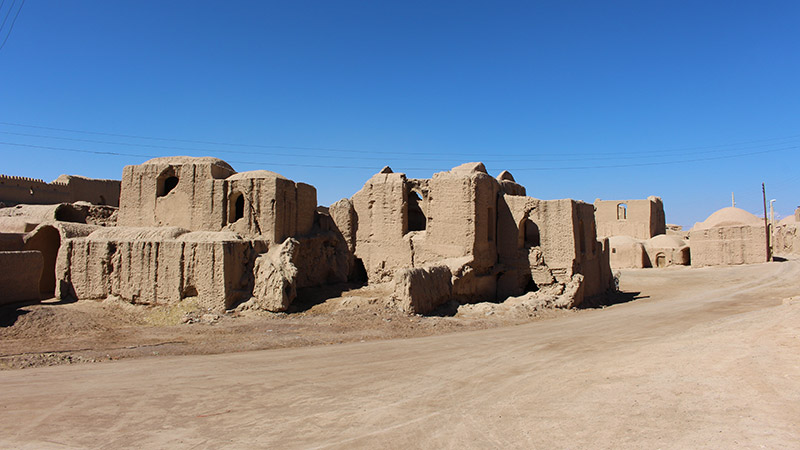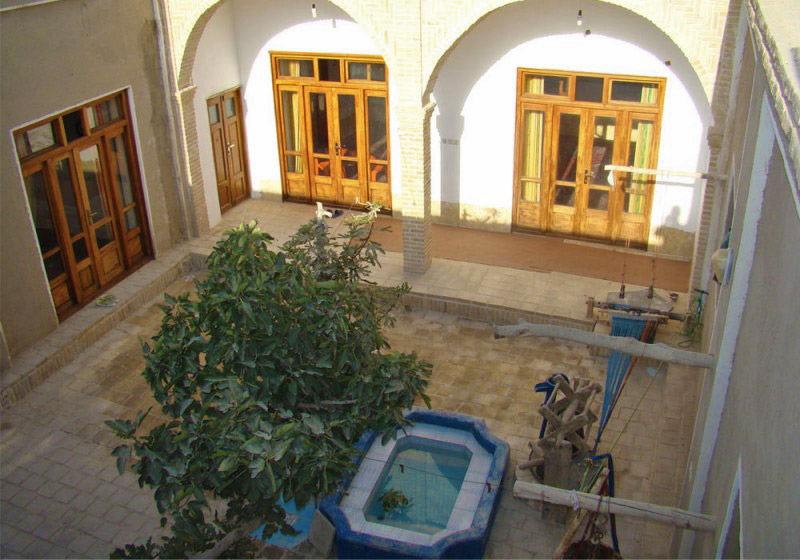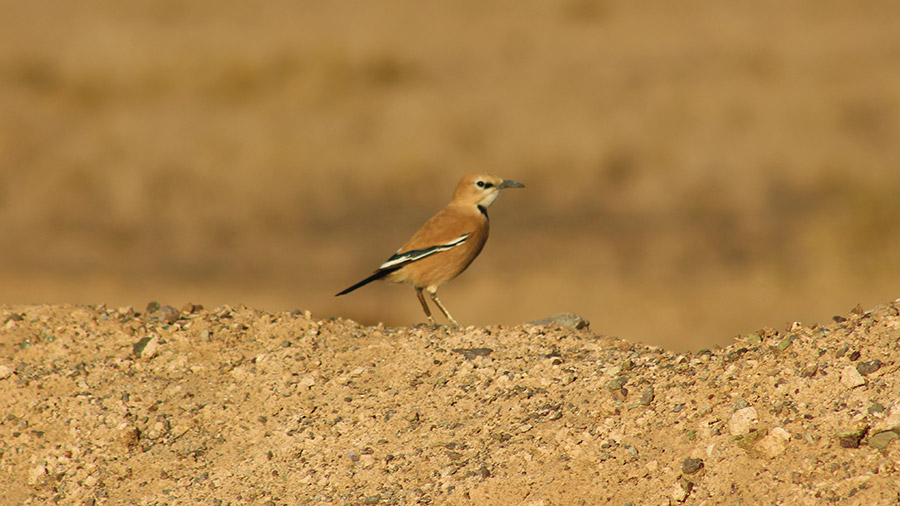 Signin with Google
Signin with Google Signin with Facebook
Signin with Facebook
Birdwatching in Varzaneh, Cross Isfahan to Yazd
Bird watch tour in Varzaneh | In search of the only endemic bird of Iran, Iranian Ground Jay
Book
- Gallery
- Overview
- What you experience
- Available On
- Locations
- Features
- Necessities







Have you ever crossed the desert observing interesting species of birds on their way of migration? The largest river of the central plateau of Iran originates from Zagros Mountains, flows eastward to reach Gavkhouni international wetland at the vicinity of sand hills between Isfahan and Yazd province. This point is where the only endemic bird of the entire Iran also lives. Zayande-Rud River as comes out from its name gives life to the arid lands of the central desert to be host to a variety of species and human cultures. Join the venture of birding through discovering the authentic rural lifestyle in Varzane desert town, while walking on the footstep of history in ancient desert castle and caravanserais.
Birdwatching in the international wetland of Gavkhouni
Visiting Varzane city and its interesting rural life
Having traditional local lunch in an eco friendly homestay in desert
Searching for the only endemic bird of Iranian plateau to find and picture it
Visiting the second greatest citadel of Iran remaind from Safavid era
Strolling through sand roads of desert
- Meals: 1 Breakfast, 1 homemade lunch in an eco-friendly residence, an evening meal in the desert with herbal tea and traditional pastry
- Transportation: All transport from Isfahan during the tour to Yazd city
- Other services: English birding guide, Water bottles, Visit of Varzaneh desert town and its attractions, encounter with desert and sand dunes
- Not Included: Any extra meal or service not stipulated in the itinerary, transportation back to Isfahan city, phone calls, travel insurance, tips (optional), cost of medical immunizations
- Extra shoes, for getting wet in mud most likely
- Sunglasses
- Hat
- Sunscreen
- Windbreaker/ Rain jacket
- Note: Bring your personal optical supplies and binocular equipment with you
Being a birder and happened to be between the mythical cities of Isfahan and Yazd with an impressive ecosystem of gravel, river and marshes in the desert a few kilometres from a unique society of white worn ladies town possessing the most charming method of pulling out the water from the well, means there is going to be an experience of a lifetime.
The Pigeon Tower, a place of history and wilderness
Leaving Isfahan we move toward pure nature. There are hundreds of pigeon Towers in the central Iranian plateau made by residents of it to use the wastes of birds as fertilizer for farming. More than 200 pairs of pigeons lived into each one of these towers and many other birds of prey have been attracted by the presence of these pigeons.

From earthen castle to the blue river of Zayandeh
We start our experience with the breakfast being encircled by pigeon towers of Ezhiye, then get to the Ghourtan Castle, the second largest historic citadel in Iran after Arg-e Bam, Well-preserved stands by the desert city of Varzaneh.
Turning toward the largest river in the heart of Iran whose river bed is spanned by many historical bridges in the Safavid era. Starting our first bird observation by Zayandeh river, where some near Arthur Pope (an American archaeologist and expert of Persian art) and his wife are buried in a small modest tomb in surroundings in its banks.

Varzaneh, the desert city of Gav chah and ladies in white
After catching some enchanting bird species by the river, let's head toward the magic of sand dunes of Varzaneh desert. Visiting this small town is a chance to see first hand lifestyle of the desert: found out why this is the only place in Iran where women wear white scarves and cloaks to cover themselves and attend the "Gav Chah" performance, a traditional and folkloric method to get water from a well, with the help of a Sistani cow. We discover the traditional lifestyle and customs of desert people while enjoying local homemade lunch in a cute homestay with a special design.

Since Varzaneh is the closest village to the wetland right after lunch we say goodbye to it and set forth our next epic. Called "Gavkhouni", the international wetland and a member of Ramsar international convention of wetlands, was named as the sea by locals whose livelihood depends directly on the preservation of this natural habitat. Though the wetland has run dry mostly during recent decades.

Gavkhouni wetland hosts to many species of birds throughout the year, who come to rest and feed themselves during their migration route. The highest spot in this region is a sacred "Kuh-e Siyah" means "the black mountain" that offers a range of different birds to let your heart beat faster.
Witnessing the iconic Persian Ground Jay
The climax of this birdwatching experience is the opportunity to observe the only endemic bird of Iran, the Persian Ground Jay. This tiny buff-coloured bird has become the symbol of the country all over the world. It is called "Ahmagh-e Davoon", which means "Silly running bird", by locals, who kindly mock its habit to run in a weird manner instead of flying in fear of being in danger. Most luckily with the positive energies we are going to drop in the heart of the desert near Safavid caravanserai to see the king of desert birds of Iran.

Brief Itinerary:
The departure is at 6 A.M. from Isfahan. Reaching Ezhiye surrounded by pigeon towers, having breakfast, visiting the Pigeon Towers around 7:30 A.M., visiting Ghourtan Castle and enjoying birdwatching on the Zayandeh Roud River. We reach the sand dunes of Varzaneh desert at 9:30 A.M.
Visiting the city of Varzaneh, attending the “Gaav Chah”, and the traditional performance. For lunch, we rest at an eco-friendly traditional house located in the desert city.
Right after lunch, around 12:45 A.M., Moving toward “Shakh-Kenar” region and the wetland of Gavkhouni until 2 P.M. Then, we explore Khargooshi castle and have the chance to observe the Persian Ground Jay. Finally, heading toward Yazd to arrive in the city of windcatcher between 6:00 and 8:00 P.M.
Tip 1: The diversity of birds varies considerably from one season to the other.
Tip 2: Watching the Persian ground jay is harder from Mid-March to the end of July. However, there is no strong guarantee for visiting the Iranian Ground Jay.
Important spices of this route depending on each season they are likely to be seen:
Iranian (Pleskes) Ground Jay, Glossy Ibis, Greater Hoopoe Lark, Scrub Warbler, Hume's Wheatear, Eastern Imperial Eagle, Long-legged Buzzard, White-tailed Eagle, Crested Lark, Blackcap, Little Grebe, Whiskered Tern, Pied Kingfisher, Pallid Harrier, Western Marsh Harrier, Pied Wheatear, Mourning Wheatear, Black Redstart, Bluethroat, Water Rail, Black-winged Stilt
